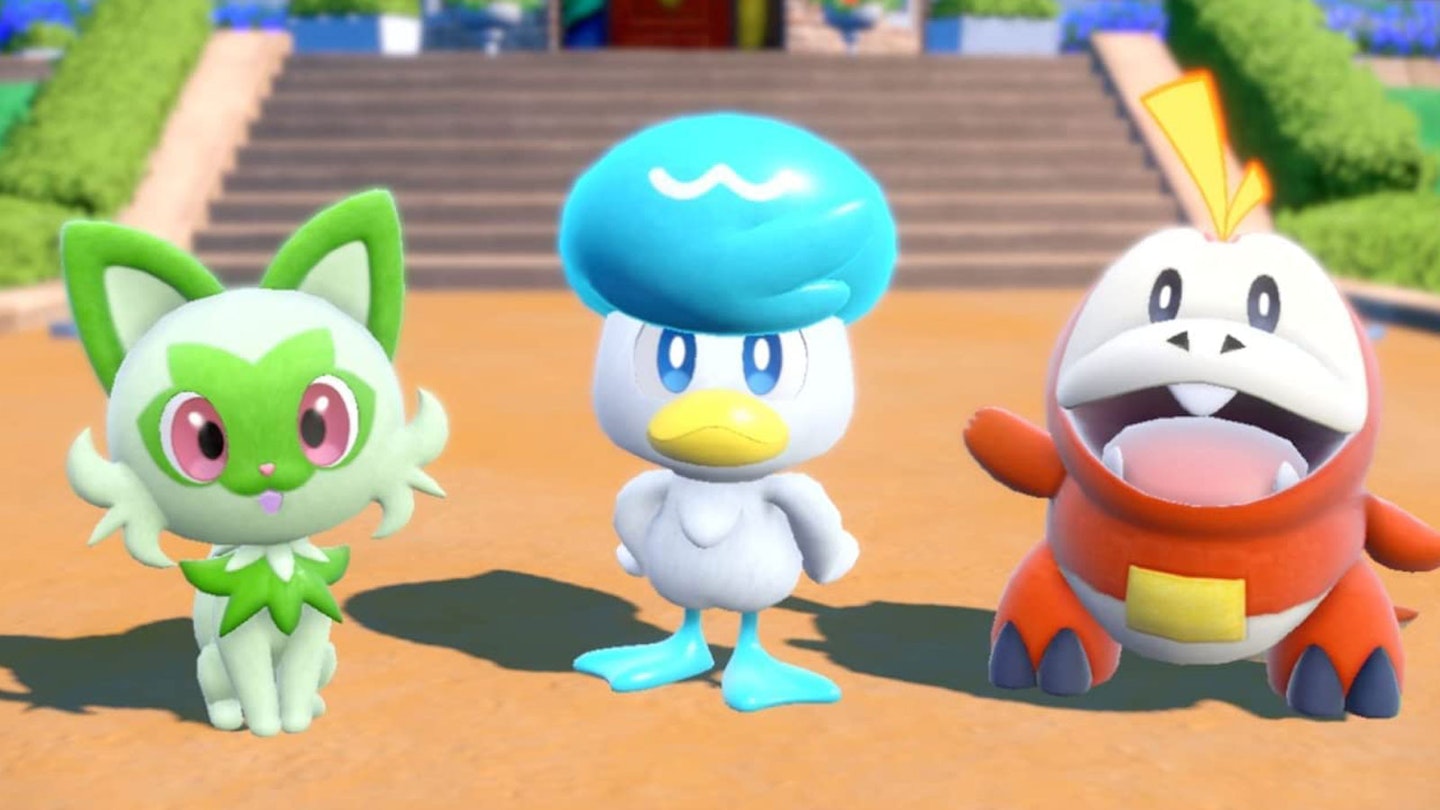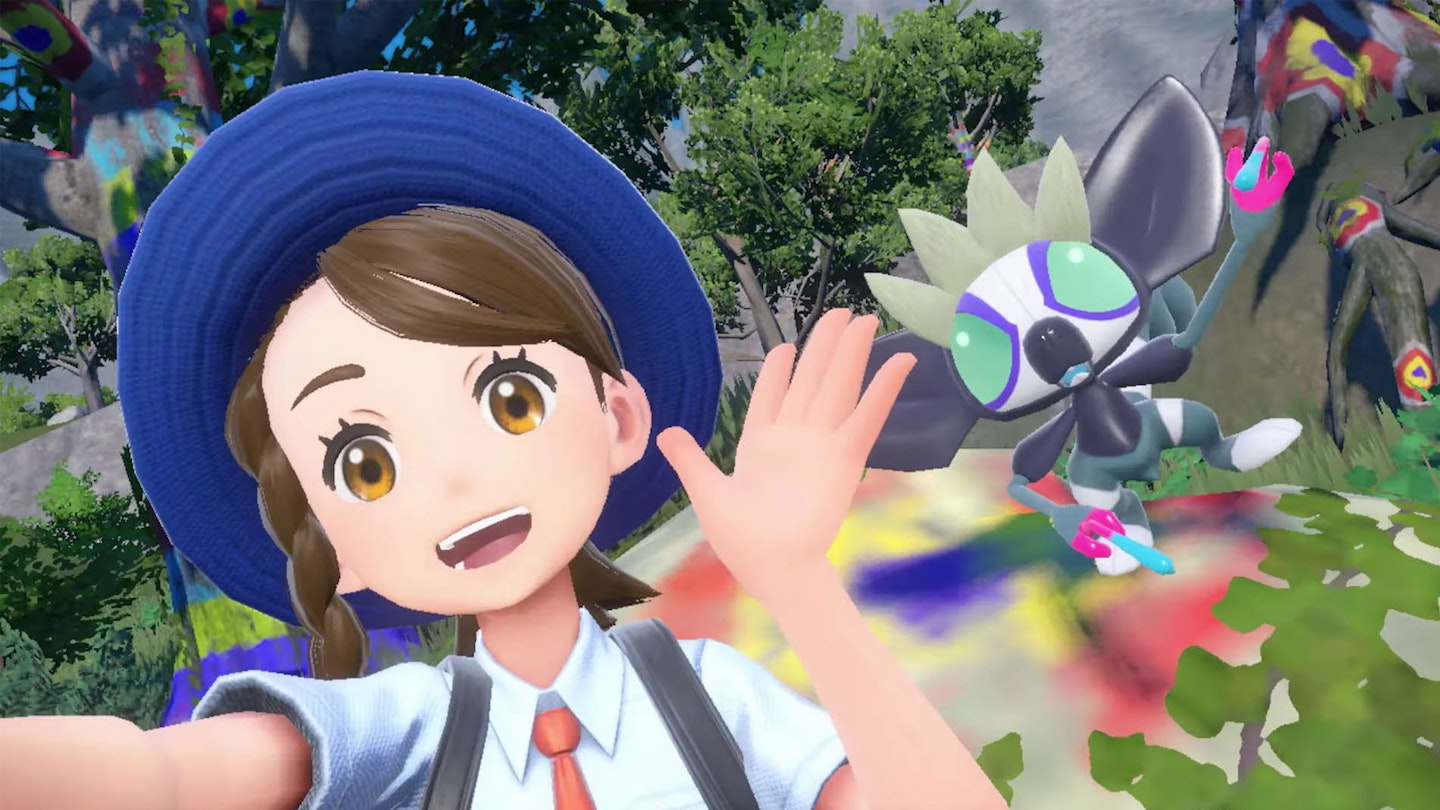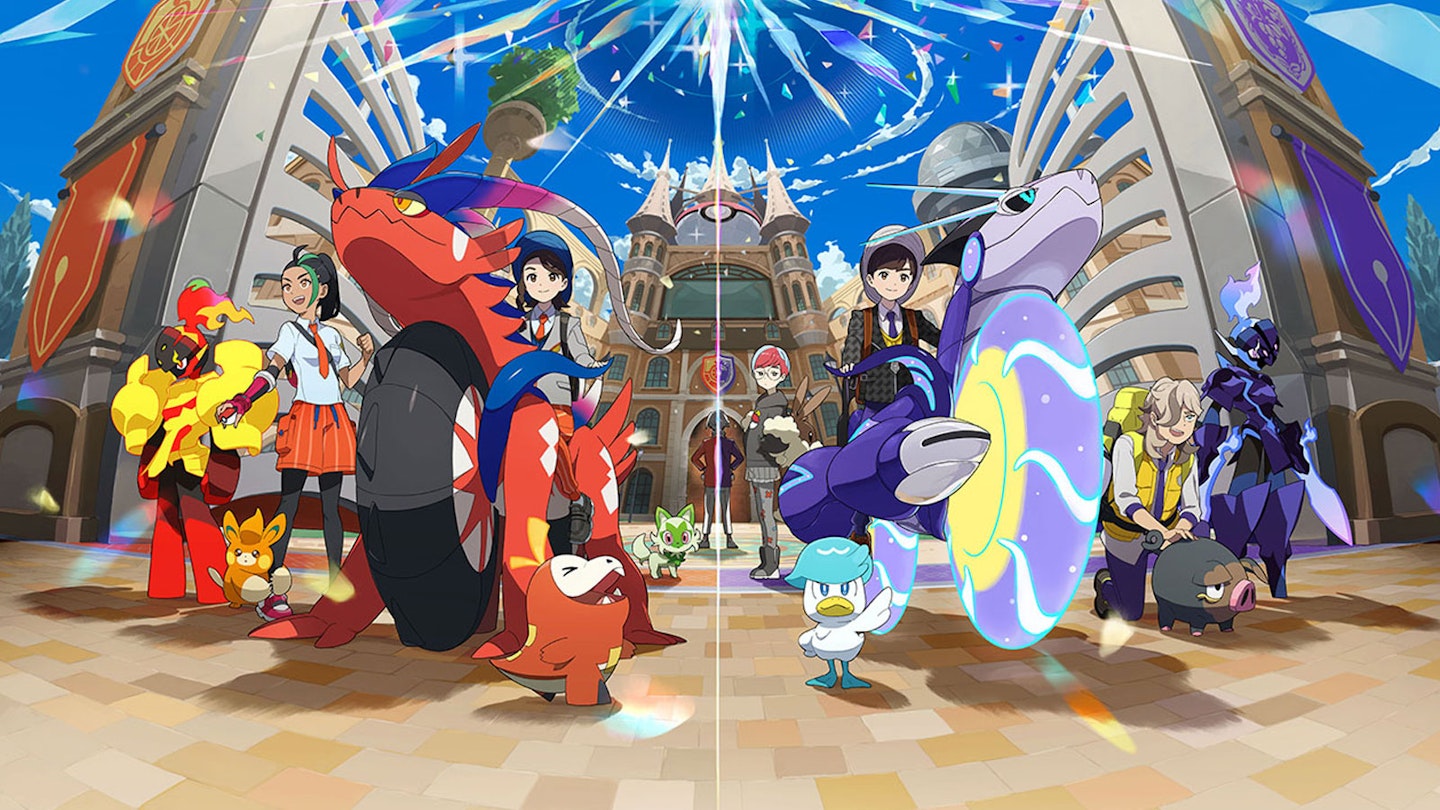Platforms: Nintendo Switch
An open world Pokémon game has arguably been fans’ most-requested upgrade for years. After testing the waters with the open field Wild Areas of 2019’s Pokémon Sword and Shield, and the siloed off open areas of Pokémon Legends: Arceus earlier in 2022, developer Game Freak has finally delivered with Pokémon Scarlet And Violet.
Unfortunately, just what has been delivered is a buggy, slow entry for the much-loved monster-catching series. While there’s a lot to love here, and plenty of material gameplay improvements on its core instalment predecessors, it’s all buried under woeful performance issues and glaringly obvious quality sacrifices that seem to have been made just to get a game of this scope running on the increasingly ancient Switch hardware.
On the positives, Game Freak has delivered some genuine evolutions to the quarter-century old formula. Pokémon now wander freely, allowing you to seek out the exact creature you want to capture. You can have a Poképal explore the world with you, or even send them to tackle those wild Pokémon directly on the map, earning experience (albeit less) without having to go through a full turn-based battle. Breeding of Pokémon is given a much-needed upgrade, doing away with the traditional Daycare Centre in favour of eggs appearing when you stop for a picnic with your team, which also allows you to groom and play with them to increase friendliness and other stats.

Not all the changes are winners, though. TMs to teach Pokémon certain moves are once again single-use — although more can be crafted — while new ‘Terastallized’ forms feel gimmicky. These are the Scarlet And Violet equivalent of Mega Evolution or Z-Moves, seeing Pokémon take on a crystalline form with boosted stats and potential changes to their elemental types. However, they’re extremely limited in use – where those earlier combat modifiers could be used once per battle, Terastallizing can only be used once, before needing a recharge at a Pokémon Centre. Even accounting for these missteps, it’s clear Scarlet And Violet are meant to move the series forward, and some of the shifts feel truly generational in ambition, if not execution.
The story is also a marked improvement on Sword And Shield. Where that game felt like it actively diverted the player away from pivotal events in the world, here you’re once again central to everything that happens, from starting out as a transfer student at the prestigious Uva Academy, to endgame developments of global scale. Once you’re gifted your starter Pokémon – grass cat Sprigatito, fire croc Fuecoco, or water duck Quaxly - you’re sent out to explore the Spanish-styled Paldea region as part of your education. The school setting is a nice way of finally addressing the decades-old curiosity of allowing school age children to roam the Pokémon world unaccompanied, while also providing a central hub to which you can return at any point for lessons and Persona-style relationship building with supporting characters.
The world may be fully open for the first time in Pokéhistory, but the demands elsewhere mean it’s also largely barren.
Out in the world, you have not one but three main plot threads to pursue, and freedom to follow them in any order you please. There’s the familiar quest to be the very best, like no one ever was, and rise to the top of the Pokémon League by taking down eight gym leaders and the Paldea region’s Elite Four. Or there’s the ‘Starfall Street’ thread, which sees you taking on the five leaders of Team Star, the current diptych’s string of grunt enemies. These bring another new mechanic to the core Pokémon games, where you’ll raid each boss’ base and take down waves of enemy ‘mons in real time, before a more conventional battle with the base’s leader. Then there’s ‘Path of Legends’, which has you hunting down Titan Pokémon as part of the game’s most emotional storyline, restoring the health of a friend’s ailing partner, and that of the mysterious legendary Pokémon that you befriend early on in the game. The arc also leads into bigger threats that serve as Scarlet And Violet’s larger meta-plot, and works in a few poignant points about families, abandonment, and obsession.

That legendary Pokémon - Koraidon or Miraidon, depending on version - is also pivotal to navigating this new open world. More Transformer than Pokémon, they shift into motorbikes that allow you to better traverse Paldea. Each Titan you defeat increases your ‘don ‘mon’s abilities, taking it from a bike that’s barely faster than walking, to one that can sail the sea, glide through the air, and climb mountains. When it’s fully powered up, it’s a great feeling being able to get almost anywhere on the map, seeing the scale of the world Game Freak has built.
Or, we should say, tried to build.
The main attraction, the Pokémon themselves, are beautifully presented, in or out of battle. However, the challenge of having literally hundreds of creatures with a nigh-infinite combination of attacks, animations, and mix-and-match Terstallized forms means that everything else pays the price.
The world may be fully open for the first time in Pokéhistory, but the demands elsewhere mean it’s also largely barren. The cities that scatter Paldea are smaller than those in past entries, and largely empty – people wander the streets, but few buildings or shops can be entered. Even Pokémon Centres have been reduced to identikit drive-by windows, while gyms are cut-and-paste tower blocks, regardless of location or gym theme. Wherever you are, textures are frankly appalling – environmental detail is, charitably, at the level of a PS2 game, which is all the more galling when characters and creatures are lovingly modelled.
Worst of all is the overall performance of the game. Paldea absolutely chugs by with a frame rate that drops to single digits. Pop-in of objects, buildings, and wild Pokémon is a regular problem, while anything that has loaded onscreen but is slightly further away moves with incredibly awkward, stilted animation. All that’s before we get to the actual bugs of the game, which include inadvertently hilarious – and meme-worthy – visual discrepancies caused by the slow-loading and low frame rates, to the occasional crash of the game mid-battle.
What makes this all the more aggravating is that at their core, Pokémon Scarlet And Violet are undeniably better games than Sword And Shield. There’s so much to enjoy here as a player, but it’s lost under embarrassing presentation and performance issues. If you can put up with those problems, Scarlet And Violet are great _Pokémon_games, but in practical terms they’re a textbook example of ‘be careful what you wish for’ – the very thing fans have spent years begging for has sadly resulted in perhaps the first game to ever be in desperate need of a remaster on day one of its release.
